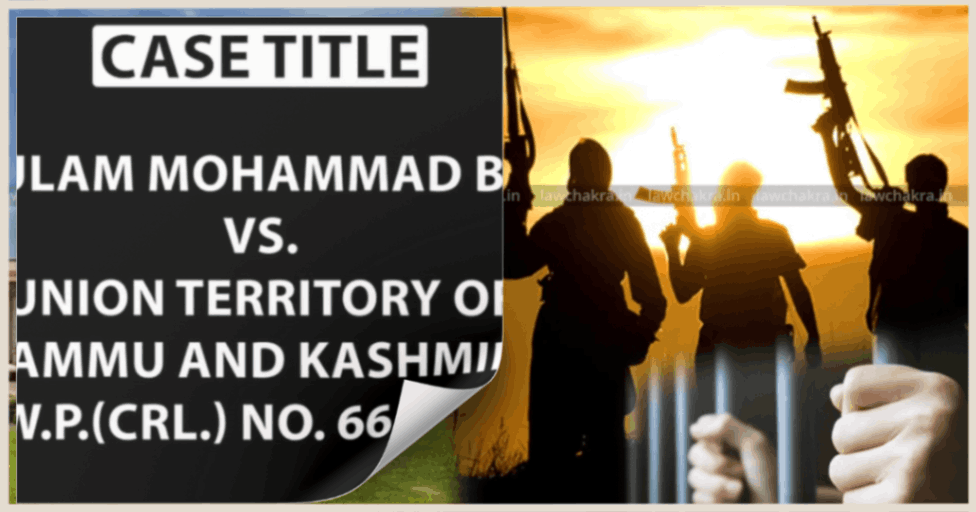In a landmark ruling on July 16, 2025, the Supreme Court of India delivered a significant judgment, declaring that creating an atmosphere of fear to prevent individuals from supporting law enforcement constitutes a terrorist act, even if anti-terror laws are not explicitly invoked. This decision, emerging from a remission plea hearing involving a convict in a Jammu and Kashmir (J&K) case, underscores the judiciary’s evolving interpretation of what constitutes terrorism in the Indian legal framework. The ruling has far-reaching implications for how courts may address cases involving intimidation and violence aimed at undermining public cooperation with authorities.
Background of the Case
The case centered on a remission plea filed by Ghulam Mohammad Bhat, a convict sentenced for the killing of three civilians, including an army informer, in Jammu and Kashmir. The incident, which involved the use of an AK-47 rifle and reportedly the recovery of explosive devices like grenades at the scene, was initially prosecuted as a murder case rather than under anti-terrorism statutes. The convict sought early release, arguing that the offense was not classified as a terrorist act by the trial court or the High Court, as no anti-terror laws, such as the Unlawful Activities (Prevention) Act (UAPA), were applied.
The Supreme Court, presided over by Justices Ahsanuddin Amanullah and S V N Bhatti, rejected this argument. The bench emphasized that the absence of a conviction under anti-terror laws does not preclude an act from being classified as terrorism if its intent and impact are to instill fear and deter cooperation with law enforcement.
The Court’s Rationale
The Supreme Court’s ruling hinged on the broader societal impact of the crime. The bench noted that the deliberate targeting of an army informer was designed to create a chilling effect, discouraging others from assisting authorities in maintaining law and order. “If you want to create fear among people to ensure that no one approaches authorities against the illegal act, then it is a terror act, and we cannot close our eyes,” the court stated. This perspective expands the definition of terrorism beyond the strict confines of specific statutes, focusing instead on the intent and outcome of the act.
The court’s reasoning aligns with the evolving global understanding of terrorism, which emphasizes psychological and societal disruption over mere technical classifications. By equating the creation of fear with a terrorist act, the judiciary has signaled a proactive stance in addressing crimes that undermine public safety and trust in governance, particularly in sensitive regions like J&K.
Legal and Social Implications
This ruling has significant implications for India’s criminal justice system and its approach to combating terrorism. By broadening the scope of what constitutes a terrorist act, the Supreme Court has empowered lower courts to consider the broader context and intent behind crimes, even when anti-terror laws are not invoked. This could lead to stricter judicial scrutiny in cases involving violence or intimidation aimed at suppressing cooperation with law enforcement.
In regions like Jammu and Kashmir, where security forces often rely on local informants to counter insurgency, this judgment reinforces the protection of those who risk their lives to support law enforcement. It sends a clear message to perpetrators that acts designed to intimidate communities into silence will be treated with the same severity as those prosecuted under anti-terror laws.
However, the ruling also raises questions about the potential for overreach. Legal experts suggest that the broad interpretation of “terrorist act” could lead to subjective applications in future cases, particularly if the judiciary does not establish clear guidelines for what constitutes “creating fear.” There is a risk that ordinary criminal acts could be escalated to terrorism-related charges, potentially affecting the rights of the accused.
Reactions and Broader Context
The ruling has sparked varied reactions. Legal scholars have praised the court for its nuanced understanding of terrorism, particularly in recognizing the psychological impact of such acts. “This judgment acknowledges that terrorism is not just about bombs and large-scale attacks; it’s also about the silent fear that paralyzes communities,” said Dr. Anjali Sharma, a constitutional law expert based in New Delhi.
On the other hand, some human rights advocates have expressed concerns about the potential misuse of this precedent. “While the intent to protect public cooperation with law enforcement is commendable, the lack of specificity in defining ‘creating fear’ could lead to arbitrary interpretations,” cautioned Meera Khan, a human rights lawyer. She urged the judiciary to provide clearer parameters to prevent misuse in cases involving dissent or protest.
The ruling comes at a time when India is grappling with complex security challenges, particularly in J&K, where insurgency and separatist activities have long posed threats to stability. The Supreme Court’s emphasis on protecting informants and upholding public trust in law enforcement aligns with the government’s broader counter-terrorism strategy. Posts on X reflect public interest in the ruling, with some users lauding the court’s stance as a step toward stronger national security, while others debate its implications for civil liberties.
Conclusion
The Supreme Court’s declaration that creating fear to deter cooperation with law enforcement constitutes a terrorist act marks a pivotal moment in India’s judicial approach to terrorism. By prioritizing the intent and societal impact of such acts, the court has expanded the legal framework for addressing crimes that undermine public safety. While the ruling strengthens protections for those who assist authorities, it also underscores the need for careful application to avoid overreach.
As India navigates its complex security landscape, this judgment will likely influence future cases, shaping how courts balance the fight against terrorism with the protection of individual rights. For now, the decision stands as a testament to the judiciary’s commitment to safeguarding public trust in the rule of law, even in the face of fear.

